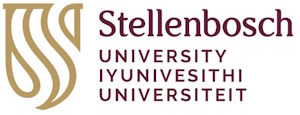
“When the time came to choose a degree, I didn’t have a clear idea of which career path I wanted to pursue. Every aptitude test said I should become a medical professional but that was the one profession I had eliminated early on (I struggle to look directly at a paper cut). The second recommendation in every set of aptitude test results was Engineering. Since Mathematics and Physics were always my favourite subjects, it sounded like a good fit. Moreover, my father also studied Industrial Engineering and he always told me that obtaining this degree taught him how to think rather than what to think,” says Ghiete van Zyl who has just completed her PhD in Industrial Engineering.
Both her parents were Maties and this most certainly influenced her decision to study at Stellenbosch University. “The stories my father told about Stellenbosch in general and res life in particular almost made it sound like Neverland for students. We also used to drive to Stellenbosch for breakfast on a Saturday or lunch on a Sunday and I remember thinking I can’t wait to live in such a beautiful town.”
Initially, she was not quite clear on which engineering discipline to choose. “Since I did not have a clear notion of what I wanted my career path to look like, I wanted to keep my options as open as possible. After much research, I decided that Industrial Engineering would offer me the greatest range of opportunities.
Dr van Zyl completed her final-year project under the supervision of Prof Jan van Vuuren which allowed her to become a member of the SUnORE research group. On this she comments: “I think I learned more from studying under Prof van Vuuren and interacting with the members of the SUnORE group (especially the postgrad students) than I did from the rest of my final-year course work combined. Nevertheless, I knew that I had barely scratched the surface of what Prof van Vuuren and the SUnORE group could teach me. I was also acutely aware of the fact that I would most likely never again be afforded the opportunity to be surrounded by so many exceptional individuals. Naturally, I wanted to extend my time in such a stimulating environment so I opted to pursue my master’s studies under Prof van Vuuren. Never before had an educator had such a profound impact on me. He dedicates an almost inhuman amount of time and effort to his students and manages to simultaneously challenge and inspire them. Having experienced this first-hand during my final-year of undergrad, my decision to pursue a master’s was motivated in large part by my desire to study under Prof van Vuuren. Also, after my first real taste of conducting independent research during my final-year of my undergrad, I found the experience uniquely challenging and incredibly rewarding.”
Prof van Vuuren, in turn, has this to say about his student: “It was such a pleasure to supervise Ghiete during her master’s and doctoral studies. She is the epitome of research dedication and she sets herself incredibly high standards. It was also an inspiration to witness Ghiete’s deep desire to make a real difference in the world with her research, by leveraging her considerable scientific skills and analytic tenacity.”
The topic of Dr van Zyl’s thesis was Graph-based semi-supervised learning for the detection of potential disease causing genes. “I designed a novel computational approach towards ranking putative disease genes according to their likelihood of contributing to disease. The framework exploits a number of intrinsic properties of biological networks and the abundance of available data related to the similarities between genes within a semi-supervised machine learning paradigm. With respect to my research, I was in the fortunate position that the majority of my experimental work was already completed before lockdown regulations were introduced and I was mostly writing up my results during the lockdown period. Consequently, working from home did not have a significant impact on my ability to complete my PhD. In addition, I stayed in communication with my supervisor throughout and he always responded immediately or close to immediately when I asked for guidance.
Looking towards the future, she notes: “At the moment I am just looking for opportunities to continue to learn whilst applying the problem-solving abilities and analytical skillset I developed during my studies in industry. I am reluctant to name a specific job title or industry because I believe there are interesting problems to be solved in almost any position and/or industry, but I will say that I always enjoy learning about something that is completely new to me. For example, my PhD had a large genetic component – a discipline in which I had no formal education.”
Title: Graph-based semi-supervised learning for the detection of potential disease causing genes.
Summary: In bioinformatics, disease gene classification is primarily based on the principle that the gene-product network neighbour of a disease gene is likely to cause the same or a similar disease. A novel computational approach to the disease gene identification problem was proposed in this dissertation. This methodological framework utilises the aforementioned principle and exploits both the modular nature of biological networks and the abundance of available data related to the similarities between genes within a semi-supervised machine learning paradigm. During the research 100 novel putative disease genes were identified and earmarked for further laboratory analysis.
Photograph: Dr Ghiete van Zyl.



